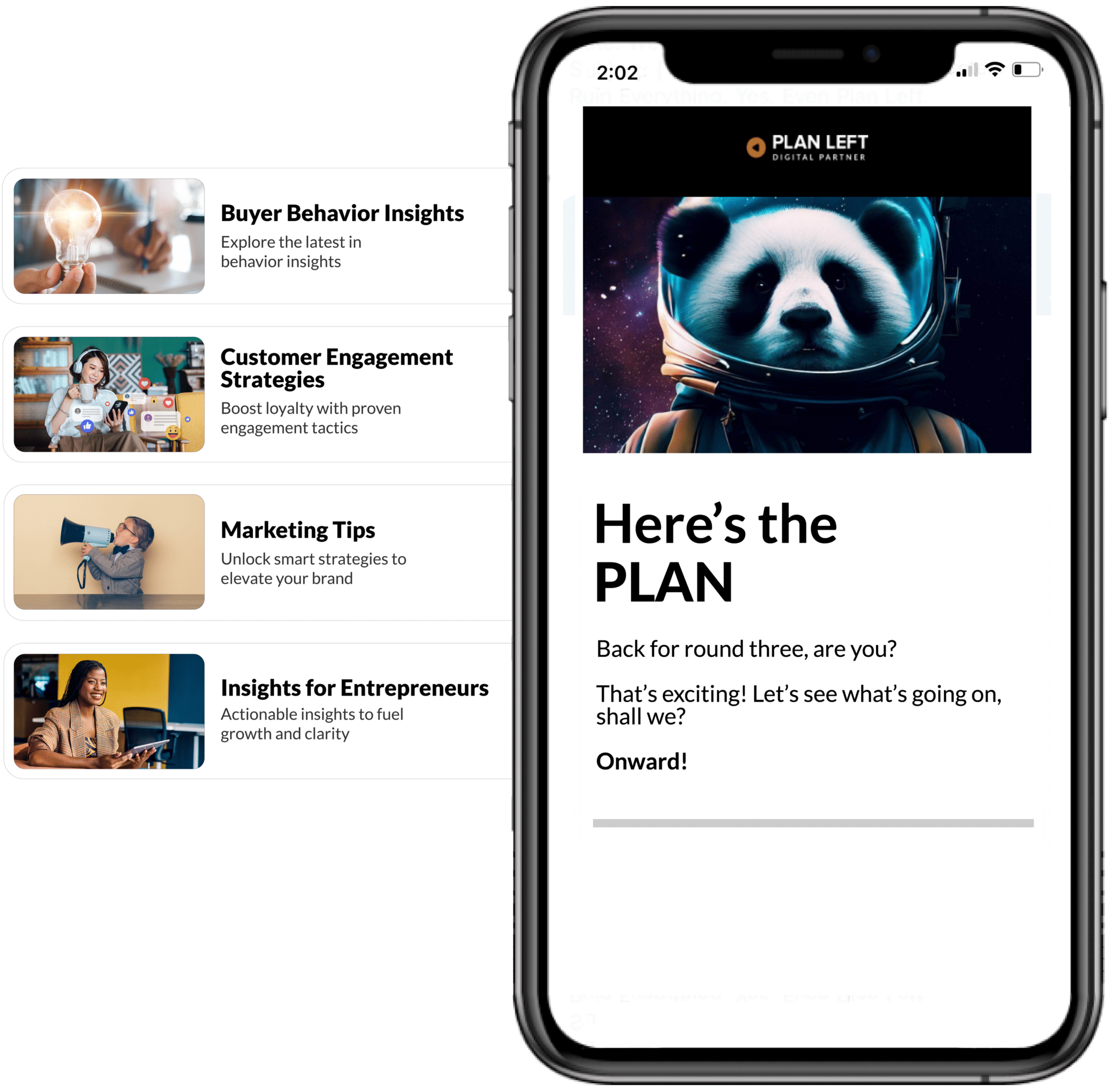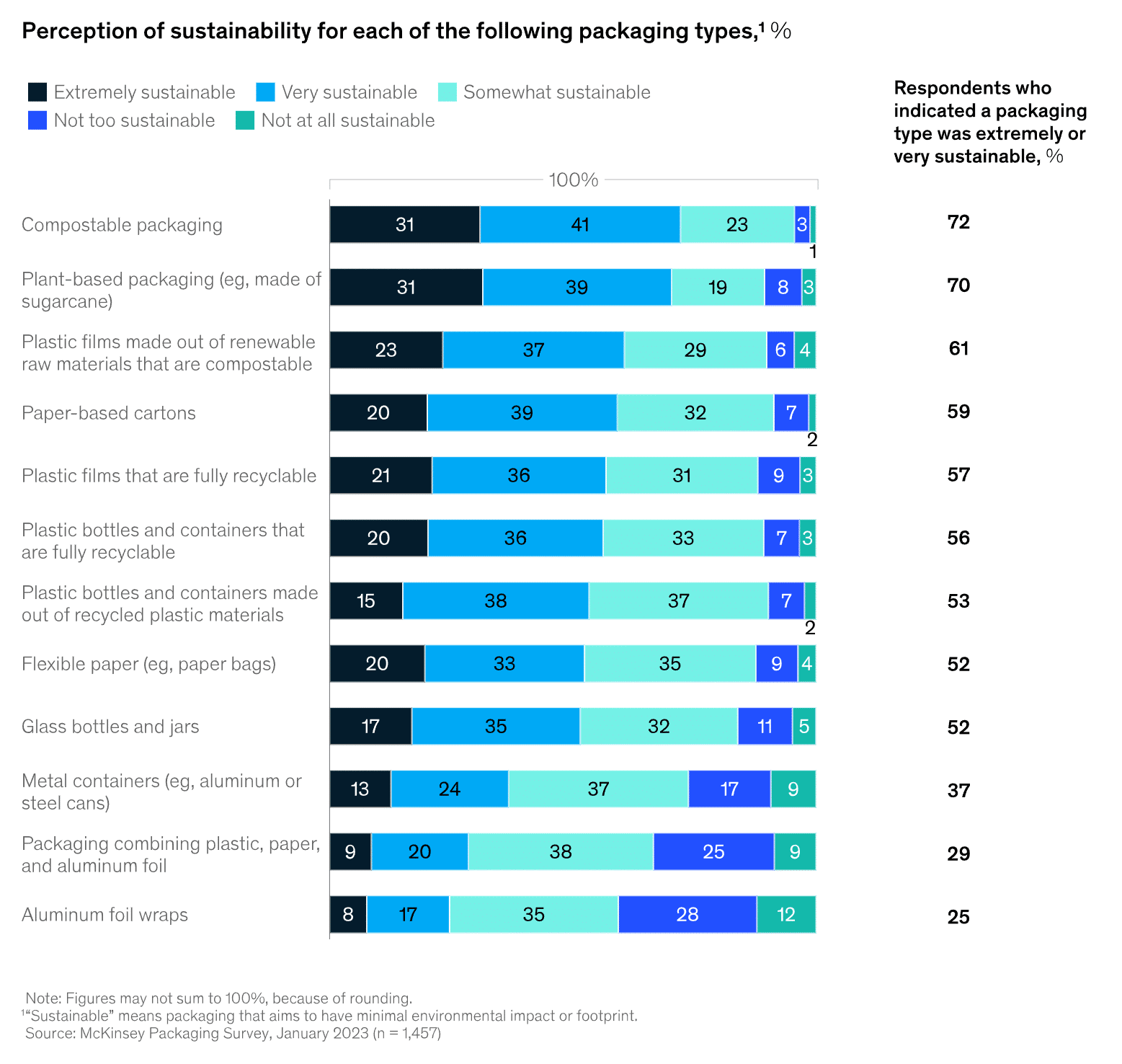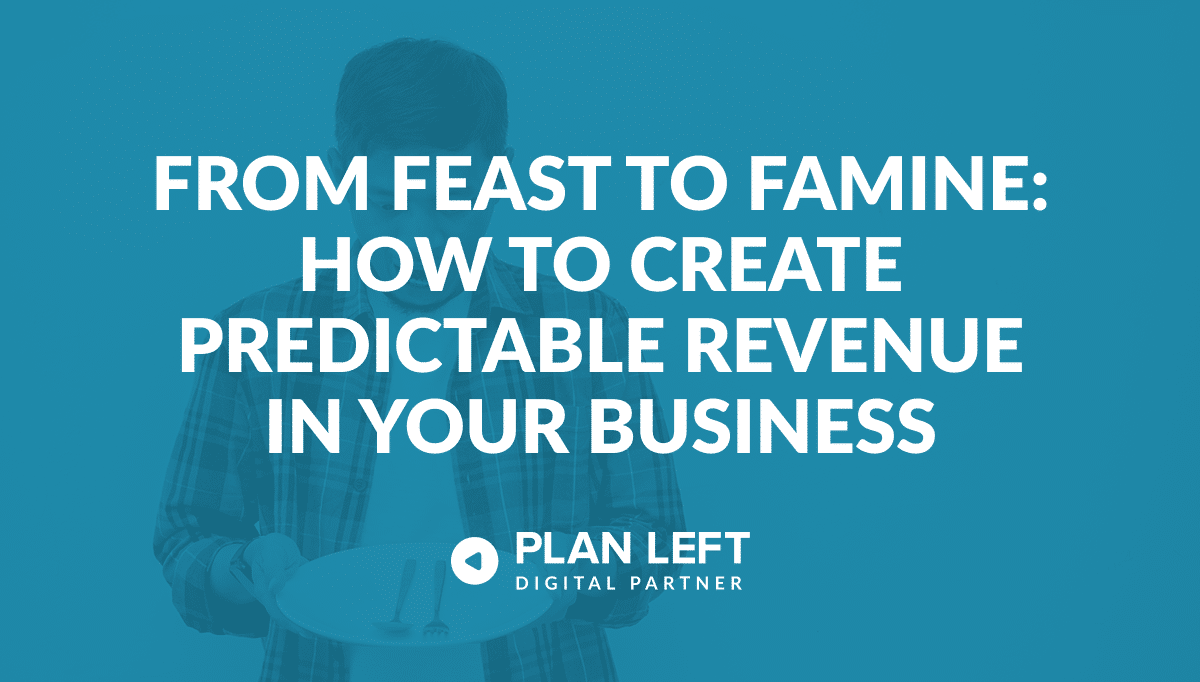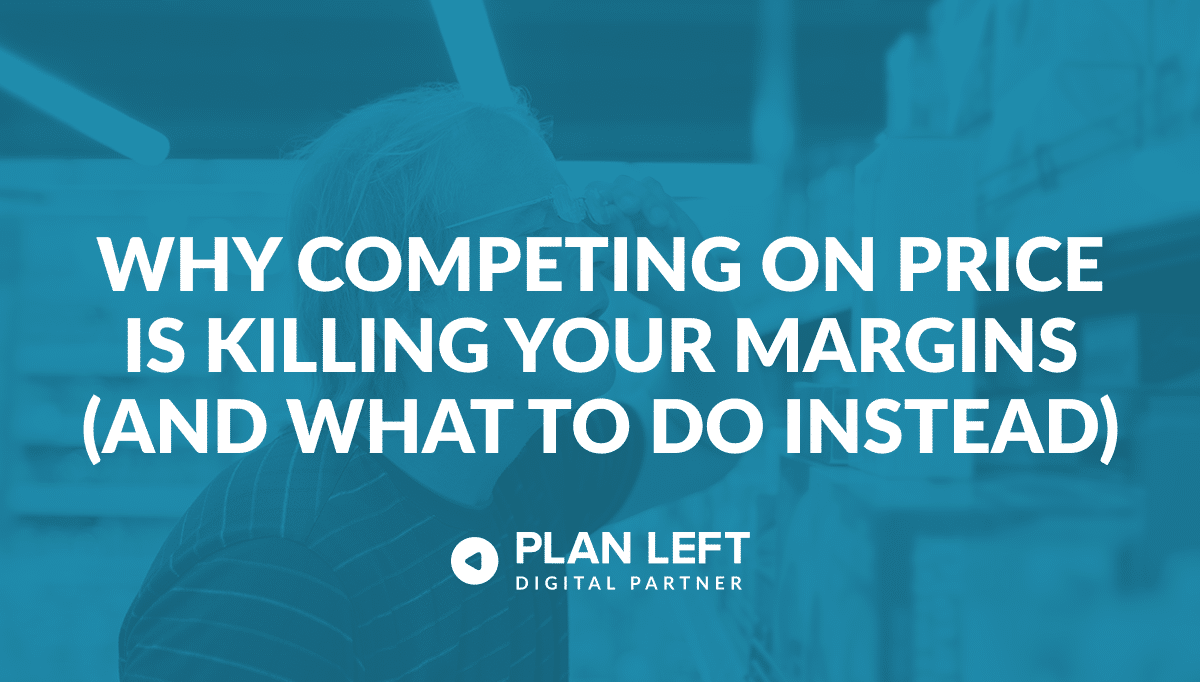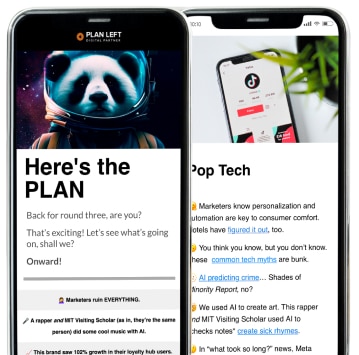
Consumers from every demographic actively seek brands that prioritize the environment, with 80% of Americans considering sustainability during their shopping process. By adopting sustainable packaging, you can boost your brand image, make a significant contribution to the environment, and position it as a powerful marketing lever. Blending sustainability into your marketing strategy adds to your brand’s appeal, building connections with your consumers and, ultimately, your bottom line.
Meet the Eco-Conscious Consumer
Understanding the eco-conscious consumer is a trend and a necessity in today’s market. A diverse range of consumers is unified by a common thread—their demand for sustainability. 74% of buyers are more likely to prioritize brands with sustainable packaging, reinforcing the shift in purchasing behavior that brands cannot afford to ignore.
Connecting Your Sustainable Packaging Story & Your Consumer
Every brand has a story, and the journey toward sustainability is a narrative with boundless potential for engagement and differentiation. Leverage your story to build a deeper connection with your consumers and turn your commitment to the environment into a compelling part of your brand identity.
Share the story of how you decided to switch to sustainable packaging. What was the moment that changed your brand’s direction? Be fully transparent with your path to discovery and humanize your brand by making it relatable to your consumers—maybe even inspiring them to change.
How to Devise a Greener Packaging Strategy
The change begins with small, manageable steps, like focusing on a single product line or updating your digital content to reflect your sustainable initiatives. Transparency and customer engagement are priorities.
Expand engagement through social media or comment sections on articles or blogs. Giving your consumers an opportunity to engage and a platform for their voices to be heard builds brand trust and loyalty.
Use press releases to update customers on your process towards integrating sustainable food packaging materials, decreasing waste, etc. And don’t forget to add your eco-friendly change to your product label to make it known on the store shelves what your brand is doing.
Building an Eco-Friendly Brand Image
Though the goal of sustainable packaging is to reduce environmental impact, the added benefit of signaling to eco-aware consumers that you share their values will enhance your brand image and strengthen its appeal.
When you build an eco-friendly brand image and a reputation for sustainability, maintaining consumer trust and loyalty will depend on your ability to act with conviction. If your customers catch you greenwashing, which is exaggerating or misleading the extent of sustainable practices, they could lose all faith in your company. Greenwashing undermines the global effort to address climate change and hinders efforts to create a more sustainable world for future generations.
Power of Sustainable Packaging for Food
While you know what sustainable packaging is, your consumers may believe it’s as simple as integrating recyclable materials into your packaging, but it’s more than that. It’s about choosing responsibly sourced and disposed of materials and decreasing waste during the manufacturing process. Sharing your brand’s journey educates your consumers on what ‘sustainable’ really means and how your brand honors the true definition of the word—from start to finish.
Add Biodegradable Bubble Wrap to Your Story
This eco-friendly alternative, often sourced from sugar cane, decomposes naturally within 180 days with the help of bacteria and living organisms, needing no external effort. Matching the durability and lightness of traditional plastic bubble wrap, it also surpasses alternatives like honeycomb paper in strength.
Storytelling can be powerful here—consider sharing a lifecycle comparison or creating visual content that shows the decomposition process, making the environmental benefits tangible and relatable to your buyers. For example, the product’s strength and protective qualities should be mentioned in your online and physical marketing materials to emphasize its performance parity with traditional options while highlighting its environmental benefits.
Plant-Based Plastics Reduce Carbon Footprint
Sustainable plastics from renewable resources like corn starch reduce fossil fuel use and carbon emissions. Offering durability and versatility, they’re suitable for various packaging needs and are more eco-friendly than their petroleum-based counterparts.
Focus on the renewable origins of these materials, using infographics to illustrate the reduction in your carbon footprint and the lifecycle of plant-based plastics compared to other plastic materials. Demonstrating the end-to-end environmental savings—from production to disposal—can enhance their appeal. Additionally, consider highlighting any certifications or eco-labels your products have earned to build trust and credibility.
Biodegradable Materials and Consumer Education
With the ability to decompose in a much shorter timeframe than traditional plastics, materials like plant fibers, bamboo, mushroom mycelium, and seaweed offer a path to significantly lower environmental impact. These materials reintegrate with the earth, contributing to a healthier ecosystem.
Share your effort to be more eco-friendly with your buyers while educating them on the importance of reducing long-term waste in our ecosystems. Storytelling, through customer case studies or behind-the-scenes looks at the decomposition process, makes these benefits more relatable and impactful. Hosting workshops or webinars to discuss the science and benefits of biodegradable materials can also engage and inform potential buyers about the positive environmental impact of their choices when buying your products.
For consumers, packing sustainability is a factor in product sustainability. Compostable packaging, plant-based packaging, and renewable raw materials made into plastic films and paper-based cartons top the list of consumers who consider them extremely or very sustainable.
Opting for Sustainable Packaging Is Good for Business
Roughly 50% of Americans are open to spending more on eco-friendly packaging. Approximately half are willing to spend 1 to 3 percent more, a quarter are okay with a 4 to 7 percent increase, and around 12 percent are even prepared to pay 7 to 10 percent more for sustainability. This willingness to pay a premium opens a window of opportunity for brands to adopt sustainable practices without sacrificing profitability.
Cost vs. Value of Eco-Friendly Packaging
Shifting to sustainable packaging is an investment in your brand’s future. This process goes beyond choosing alternative materials to adopting a strategic approach that encompasses the entire supply chain, from sourcing to final delivery. Highlighting the long-term financial benefits, such as reduced material costs and enhanced brand loyalty, can influence decision-makers and consumers alike.
Consider the following:
- Strengthening Partnerships – Build close relationships within your supply chain to collectively work towards sustainability objectives. Share stories of collaboration on social media and in your marketing materials, sharing how these partnerships have led to innovative, sustainable packaging solutions. This demonstrates your commitment to eco-friendly practices and showcases the power of collective effort in achieving sustainability goals.
- Optimizing Design – Design packaging to minimize waste and emissions, focusing on efficiency and reduced material usage. Use before-and-after visuals to illustrate the impact of optimized design on reducing your carbon footprint. Engage your consumers with interactive content, such as quizzes or infographics, that explains how a simple design change contributes to environmental savings.
- Local Sourcing – Prioritize sourcing materials from local suppliers to cut down on transport emissions. Highlight the local sourcing aspect in your product backstory. Create a narrative around the journey of your packaging materials from local fields to the consumer’s hands, underlining the reduced environmental impact and support for local economies.
- Focusing on Long-term Solutions – Embrace sustainable practices that promise long-term benefits, steering clear of short-lived fixes. Publish case studies or reports on your website detailing how long-term sustainability efforts have led to cost savings and brand growth over time. Frequently updated content offers compelling evidence to stakeholders about the benefits of investing in sustainable packaging.
Additionally, consider implementing a transparent pricing strategy that explains to consumers how the costs associated with sustainable packaging are invested back into environmental stewardship and innovation. This transparency helps customers understand the value behind the price, fostering a deeper appreciation for the brand’s commitment to sustainability.
Sustainable Packaging for Consumer Brand Longevity
Adopting sustainable packaging isn’t just a trend—it’s a strategic investment in your brand’s future. By aligning with the consumer demand for environmental responsibility, this shift showcases your commitment to the planet, solidifying your brand’s position as a forward-thinking leader. Being eco-conscious is synonymous with being customer-conscious. When you’re ready to propel your brand into the forefront of modern consumer marketing, reach out. Let’s make sustainability your strategic edge.
Explore Latest Posts
5 Signs Your Business Is Ready to Own Its Marketing (Without an Agency) The default assumption in business is that ... read more
December 31, 2025
From Feast to Famine: How to Create Predictable Revenue in Your Business Three months ago, you couldn't take on another ... read more
December 29, 2025
Why Competing on Price Is Killing Your Margins (And What to Do Instead) When a prospect asks "how much do ... read more
December 25, 2025
Essential Strategies for Entrepreneurs
Get Actionable Business Insights & Marketing Tips
Our newsletter delivers real-world strategies from entrepreneurs who’ve been exactly where you are.
Sign up now for:
- Actionable growth strategies that work
- Insider tactics for attracting top talent
- Real-world case studies from successful founders
- Emerging tech trends that drive innovation
- Pragmatic marketing approaches for visionary leaders
